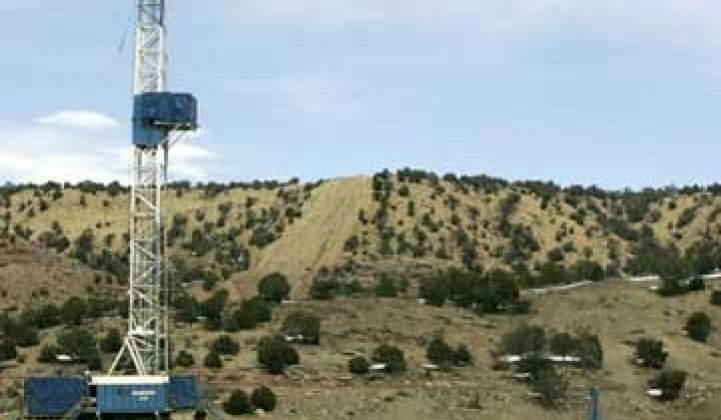Natural gas will take a larger role in a carbon-constrained energy and transportation economy, according to a study released today by the Massachusetts Institute of Technology (MIT).
The study found that the extensive natural gas reserves in the U.S., including shale resources, will play a growing role, especially in electricity generation. The fossil fuel could double to comprise 40 percent of the energy market by 2040. The authors expect the role of shale resources, which come with environmental concerns, to drive much of the expansion.
"Gas really is a bridge to the low carbon future," said Ernie Moniz, director of the MIT Energy Initiative. "But we don't know the span of the bridge."
Moniz also told Greentech Media last year that he sees light water nuclear reactors as a larger part of America's energy portfolio in the future.
The growth in natural gas is likely to come at the expense of coal because of its smaller carbon footprint. If legislation were to mandate a 50 percent cut below 2005 levels by 2050, for example, that would level the playing field for natural gas. But the authors of the study also said that that scenario would not hold true if cuts were eventually deepened to 80 percent below 2005 levels by 2100.
The study also suggested there would be growth in compressed natural gas vehicles, especially for short-haul vehicles like buses and taxis, but did not find the costs to be attractive for liquefied natural gas, especially for long haul vehicles.
T. Boone Pickens, however, told The New York Times the study did not focus enough on natural gas for transportation. Pickens is pushing the Natural Gas Act in the hopes of transitioning 18-wheelers to run on natural gas.
Pickens and the study authors are in agreement that any transportation move to natural gas will have to come through government regulation, something to "level the playing field," such as carbon legislation.
And as oil still swirls around the Gulf of Mexico and Gasland, the Michael Moore-style documentary about gas shale drilling, known as fracking, was recently released, the subject of environmental cost was also addressed. "We don't underestimate the risks with any oil and gas activities," said Tony Meggs, Visiting Engineer at the MIT Energy Initiative.
Meggs acknowledged there were risks, although he characterized them as "entirely manageable," while identifying groundwater contamination as the biggest threat. However, as seen with the BP spill, the challenge of ensuring that companies are forthright about risk in the face of profit, and then are held accountable in the case of contamination may not be as "entirely manageable" as proponents of the plan would like to believe -- just ask Obama.
Still, the report does not paint natural gas as a panacea. The authors of the study said repeatedly it was a bridge, although no one could say the length of the bridge or what the off-ramp might look like. As for natural gas as a home-grown (or -drilled) energy security solution, the authors found that the current international market is immature -- but there are huge natural gas reserves in Russia and the Middle East, and the study found it could someday be cheaper to import natural gas than to drill for it here in the U.S.
The authors concluded the report with strong call for carbon dioxide legislation to create a level playing field, the construction of a comprehensive international gas market, and additional government-supported research for gas shale development and environmental assessment.
Drill, baby, drill.



